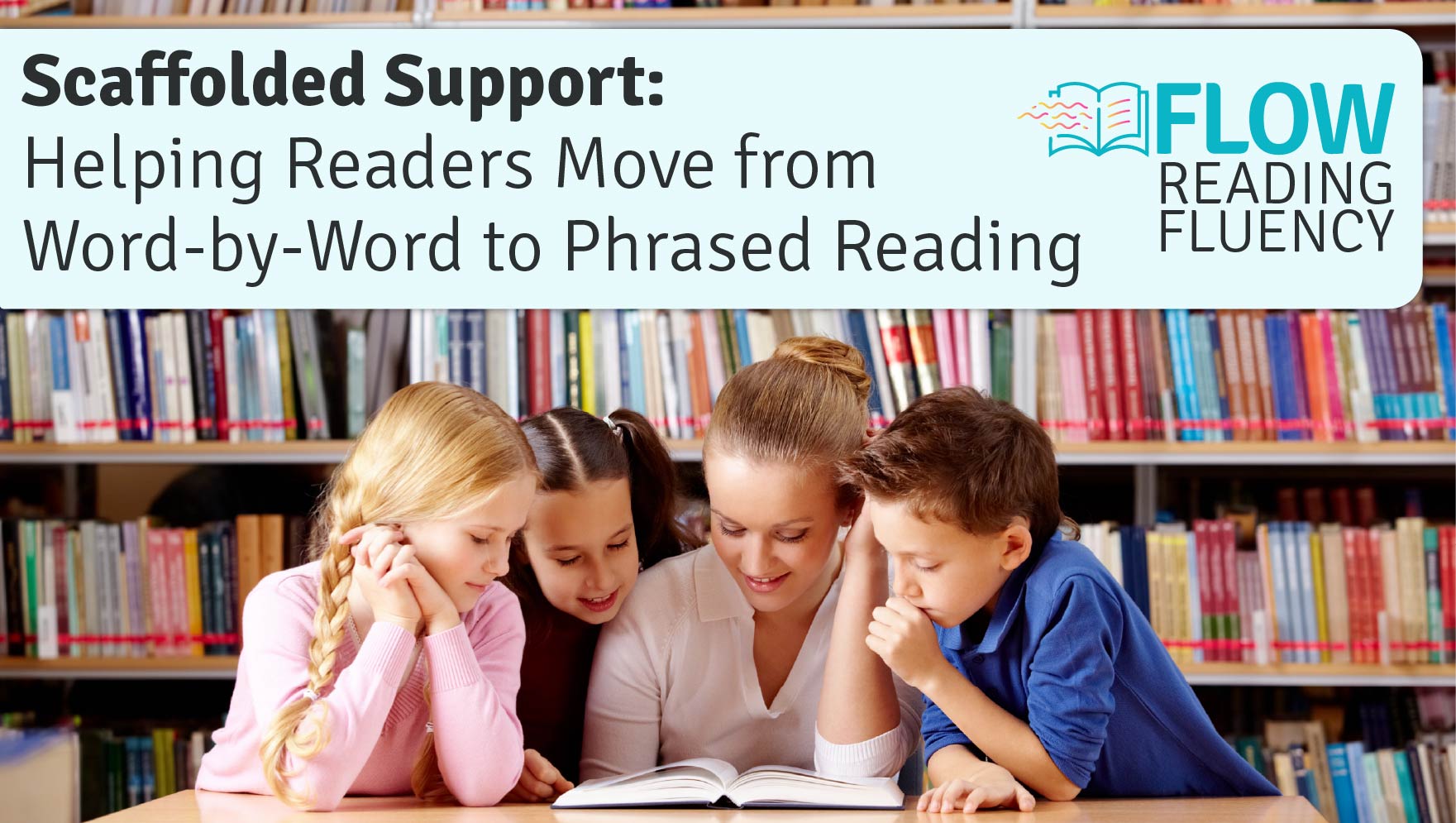
Scaffolded Support: Helping Readers Move from Word-by-Word to Phrased Reading
If you’ve ever listened to a beginning reader, you may notice a halting, word-by-word delivery that sounds robotic. This style of reading is common in early literacy development, but when it persists, it can hinder comprehension. To truly understand text, students must learn to group words into meaningful chunks—a skill known as phrased reading. The good news is that phrased reading can be taught, and scaffolded support makes the transition smoother for struggling readers.
Why Phrased Reading Matters
Reading in phrases reflects how language naturally flows. Instead of processing one word at a time, fluent readers “chunk” text into units such as noun phrases, verb phrases, or prepositional phrases. This chunking supports comprehension by reducing cognitive load and allowing students to focus on meaning 1.
Research shows that students who remain stuck in word-by-word reading often experience breakdowns in comprehension because they cannot integrate words quickly enough into coherent ideas 2. Explicitly teaching phrasing helps readers move from decoding to understanding.
Scaffolds That Support the Shift
Teachers can use several evidence-based strategies to help students grow beyond robotic reading:
1. Modeled Reading
Hearing fluent reading provides students with a model of phrasing, rhythm, and expression. Teacher read-alouds and peer modeling help students internalize what natural phrasing sounds like.
2. Marking Phrase Boundaries
Texts with phrase boundaries marked (using slashes or pauses) give students visual cues for where to group words. Over time, scaffolding can be faded as students internalize these boundaries.
3. Choral and Echo Reading
Reading aloud together reduces anxiety and helps students mimic natural phrasing. Echo reading (teacher first, students repeat) emphasizes how to group words meaningfully.
4. Repeated Reading with Feedback
Structured practice with the same passage multiple times improves rate and phrasing simultaneously. Feedback from teachers or peers helps refine pauses and expression 3.
5. Performance-Based Reading
Assigning students to read a poem, script, or dialogue for performance encourages them to attend to natural phrasing, rhythm, and expression. Purposeful practice increases engagement and comprehension.
From Scaffold to Independence
The goal of scaffolding is always independence. As students grow more confident, supports such as marked phrase boundaries or teacher-led modeling can be gradually removed. What begins as word-by-word reading evolves into fluent, expressive phrasing that reflects true comprehension.
Final Thoughts
Helping students move from robotic delivery to fluent phrasing is not just about sounding better—it’s about thinking better. Scaffolded support ensures that students have the tools and practice needed to chunk text meaningfully, opening the door to deeper comprehension and greater reading enjoyment.
References
- Kuhn, M. R., Schwanenflugel, P. J., & Meisinger, E. B. (2010). Aligning theory and assessment of reading fluency: Automaticity, prosody, and definitions of fluency. Reading Research Quarterly, 45(2), 230–251. ↩︎
- Schwanenflugel, P. J., Hamilton, A. M., Wisenbaker, J. M., Kuhn, M. R., & Stahl, S. A. (2004). Becoming a fluent reader: Reading skill and prosodic features in the oral reading of young readers. Journal of Educational Psychology, 96(1), 119–129.
↩︎ - Therrien, W. J. (2004). Fluency and comprehension gains as a result of repeated reading: A meta-analysis. Remedial and Special Education, 25(4), 252–261. ↩︎